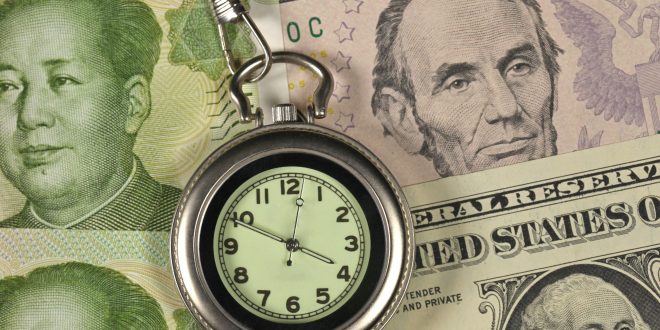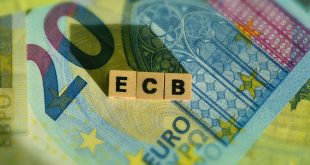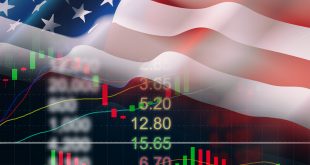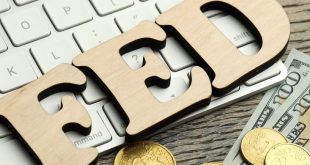Sometimes, rumours take part in shaping the market’s overall mood even partially, though such rumours have no relation to reality. Something of this kind seems to have happened last week. The EUR/USD pair has been in a sideways trend since November, fluctuating in the range of 1.1220 – 1.1385.
Currencies
Most analysts voted for the continuation of the said move a week ago, with a predominance of bearish sentiment.
As a result, the DXY dollar index went into a deep peak, closing below the 50-day moving average, and the EUR/USD pair, instead of moving south, headed into the north territory with gains.
Thanks to US inflation data, the Euro further strengthened its position the next day, on Wednesday, January 12, and the pair EUR/USD, having broken through the border of the medium-term sideways channel, went further up. The breakdown of resistance in the 1.1385 zone served as a trigger for a correction after the strengthening of the dollar that began in May 2021 and the subsequent month-and-a-half sideways trend. The weekly high was reached on the morning of Friday, January 14 at the height of 1.1482.
US retail sales and consumer confidence data released at the end of the week were much worse than previous figures, confirming the negative impact of the Omicron coronavirus strain on the US economy. It is not still, though, possible to predict exactly how much they will affect the next steps of the Fed. But, judging by the reaction of the market, investors decided that such statistics would push the regulator to take more decisive action. As a result, the EUR/USD pair finished at 1.1415.
The dollar may retreat a little more in the short term. However, the difference between the hawkish policy of the Fed and the dovish policy of the ECB should still support the USD. Moreover, the head of the Fed once again stressed in recent comments that the fight against inflation is a top priority for the US regulator, and expressed confidence that the US economy will cope with the rate increase.
The GBP/USD pair may make another attempt to rise above the 1.3800 horizon in the coming days. This scenario is supported by 90% of trend indicators on D1 and 80% of oscillators. The remaining 20% signal that the pair is overbought. However, as in the case of EUR/USD, the scales tilt in favor of the bears, when moving from a weekly to a monthly forecast, and here it is already 55% that are waiting for the pair to move down.
USD/JPY dropped from 116.35 high (high since January 2017) to 113.47 last week on the back of Jerome Powell’s speech and lower US Treasury yields. However, the ultra-dove position of the Japanese regulator is unlikely to further strengthen the yen. The dollar seems to be gaining strength again, and the pair went up again at the end of the weekly session, rising to the level of 114.18.
Stock Markets
The stock market experienced its second straight losing week to start 2022, with all three indexes finishing in negative territory. The NASDAQ shed -0.28%, while the DOW and S&P 500 lost -0.30% and -0.88%, respectively.
As for Friday’s trading, The DOW slid 201.81 points or -0.56%, to finish the week at 35,911.81. The S&P 500 inched up +0.08% to 4,662.85, while the NASDAQ outperformed with a +0.59% gain to close at 14,893.75.
World Central Banks
Neither the head of the Fed, Jerome Powell, nor other officials of the American central bank have ever said or even hinted that the rate could be raised four times during 2022. It is unclear where this figure came from, but rumors about such an opportunity began to be actively exaggerated and, as a result, many investors believed in it.
Speaking in the US Congress on Tuesday, 11 January, Jerome Powell just repeated what he had already announced earlier. He said once again that the Fed is going to raise the refinancing rate at least twice this year in order to combat a record inflation in forty years, and that if necessary, it can be raised three times. That is, nothing new was actually said. But the market was waiting for the four interest rate hikes and was disappointed because it did not sound.
The US Fed’s hawkish intentions to end the emergency stimulus program, raise interest rates, and start normalizing the balance sheet were an argument in favor of the dollar’s strength.
Naturally, in addition to the meetings of the Fed and the ECB, the meeting of the Bank of England will also take place in January. It should be borne in mind that, unlike its peers, this regulator started attacking rising prices back in December, and this made a strong impression on the market. After inflation in the UK rose to 5.1%, reaching a 10-year peak, the UK central bank hiked the rate from 0.1% to 0.25% for the first time in three years.
The decision was made despite the worsening epidemiological situation due to a new coronavirus strain. And here the opinion of the head of the Bank of England, Andrew Bailey, coincided with that of Jerome Powell: for both, the Number one task was to reduce price pressure on the economy and society.
Important macro data from the UK will suffice next week. There will be data on unemployment and the average wages in the country on Tuesday, January 18. Then, the consumer price index will be known the next day. In addition, the Governor of the Bank of England, Andrew Bailey, will speak on Wednesday, January 19, and retail sales for December 2021 will be published on Friday, January 19.
This is an important indicator of consumer spending, which also correlates with consumer confidence and is considered as an indicator of the UK economy development pace. According to forecasts, it is expected to fall from 1.4% to minus 0.6%.
The decision of the Bank of Japan on the key interest rate will be announced on Tuesday, January 18. And it will highly likely remain at the same negative level as before, minus 0.1%. As we wrote earlier, according to this regulator, the country does not need a strong currency, and a weak yen is more likely to help the country’s economy, as it supports exports and corporate profits.
Cryptocurrencies
Satoshi Nakamoto launched the bitcoin by mining the genesis block with 50 BTC in January 2009. Only some 13 years have passed since then, and The National Development and Reform Commission of China declares crypto mining “obsolete” in January 2022.
It follows from the official statement of this top economic planning body that preference will now be given to cleaner and less resource-intensive industries, and mining is on the list of “obsolete” technologies that will be banned from investment and must be eliminated.
From China, the center of influence on the crypto market shifted completely to the United States. Another proof of this was last week, when a few words from Fed Chairman Jerome Powell were enough to stop the fall of bitcoin and turn the trend of the crypto market upwards.
BTC/USD dropped to $39,660 on January 10. It has not fallen this low since September 2021. However, then, following the growth of the S&P500, Dow Jones and Nasdaq, it rose to $44,300 on January 12, and the total capitalization of the crypto market exceeded the psychologically important level of $2 trillion once again, reaching $2.091 trillion. But the Crypto Fear & Greed Index did not get out of the Extreme Fear zone, although it rose from 15 to 21 points.
It is clear that it is too early to talk about the beginning of a new rally in the crypto market. The BTC/USD pair is 35% below its all-time high, and the total capitalization is still very far from the almost $3 trillion that it reached on November 10, 2021. And, if the dollar starts to gain strength again, we can expect digital assets to return to a downward trend.
Of course, crypto enthusiasts predict as usual that top coins will soon rise to new heights. Changpeng Zhao, CEO of the Binance crypto exchange, claims in an article for Fortune that global adoption of cryptocurrencies will jump from the current 5% to 20% in 2022.
However, some experts consider such sentiments to be too optimistic. Bitcoin may return to growth only after its price drops to $28,000-30,000. “The flows of liquidity to the markets will decrease in the second half of 2022.
Gold
Gold closed lower on Friday. The low-range close sets the stage for a steady to lower opening when Tuesday’s night session begins trading.
Oil
Hysterical oil buying driven by supply outages and signs the Omicron variant won’t be as disruptive as feared has pushed some crude grades to multi-year highs, suggesting the rally in Brent futures could be sustained a while longer, traders said.
Prices for physical cargoes do not always trade in tandem with oil futures and when differentials widen rapidly and considerably, they can indicate speculators have oversold or overbought futures versus fundamentals.
Brent oil futures have jumped 10% since the start of the year but the physical market is still racing ahead, with differentials for some grades hitting multi-year highs, suggesting a tight market will push the futures rally on.
Crude oil closed higher on Friday as it extended the rally off December’s low. The high-range close sets the stage for a steady to higher opening when Tuesday’s night session begins.
Violent protests in Kazakhstan at the start of the year prompted fears of a prolonged oil outage, which did not materialize, that would have compounded outages elsewhere such as in Libya, Canada and Ecuador. The Libyan and Ecuadorian outages were largely resolved in the past week after taking out close to 1 million barrels per day. read more
At the same time, OPEC and its allies have stuck by their timeline to slowly increase output, despite repeated calls by the United States and elsewhere to go faster. Meanwhile, nuclear talks with Iran, that could also boost supply, appear stalled.
Next Week’s Calendar
As for the economic calendar for the coming week, we can note the release of data on the consumer market of the Eurozone on Monday January 17 and Thursday January 20. The ECB’s statement on monetary policy and the issue of statistics on the US labour market are also expected on Thursday. The head of the ECB, Christine Lagarde, is to speak on Friday, 21 January.
 Noor Trends News, Technical Analysis, Educational Tools and Recommendations
Noor Trends News, Technical Analysis, Educational Tools and Recommendations





